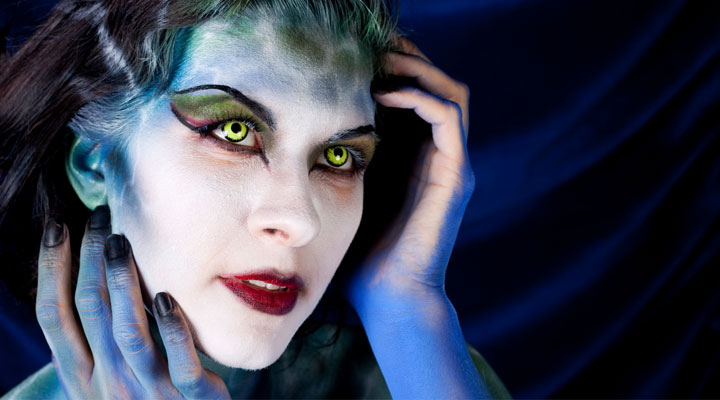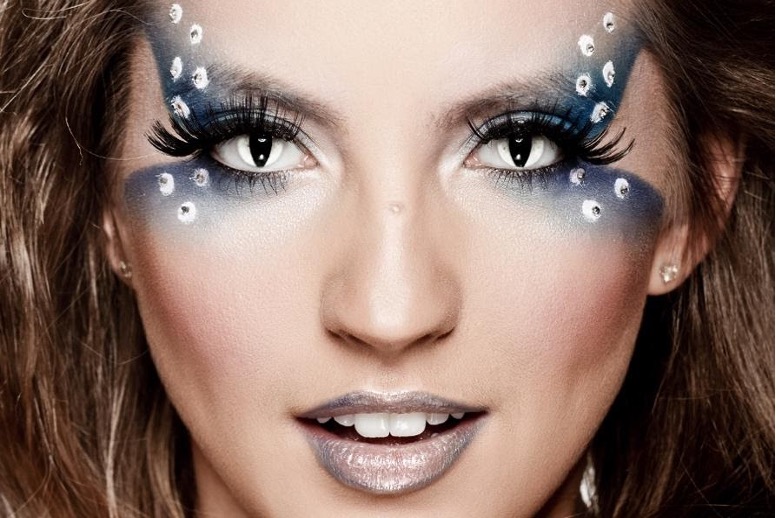
Are you thinking of adding a little extra pizzazz to your costume this Halloween? Colored contacts are available in red, white, cat eye, and, really, any color you can think of are a fun way to complete your look. But, before you buy, make sure you’re properly using colored contacts. If you choose a pair that isn’t safe for your eyes, there could be dire consequences!
Colored contact lenses should always be obtained through a prescription. Though the lenses may be what your eye doctor calls “plano lenses,” or non-corrective lenses, they still need to be the right shape for your eye. Prescription colored contacts are the only safe colored contacts.
Decorative and Colored Lenses Always Need a Prescription
The American Academy of Ophthalmology wrote about Laura, an individual who used decorative and colored lenses. After wearing the lenses for 10 hours, she had extreme eye pain. “Because I had not been properly fitted by an eye care professional, the lenses stuck to my eye like a suction cup,” Laura said.
Buying colored contacts isn’t like buying a pair of sunglasses. The impact of a cheap pair of colored contacts can be immediate and dangerous. Contact lenses that are not properly fit to the eye can cause scratching, abrasions, ulcers, and infections. Depending on the seriousness of the issue, it can lead to blindness, so take your contact lenses very seriously!


Play It Safe with Colored Contacts
Some prescription-colored contacts or decorative contact lenses change your eye color but do not correct your vision. Nonetheless, they still require a prescription.
The American Academy of Ophthalmology states, “Even though they do not correct vision, you need a prescription for decorative contacts. To avoid getting dangerous eye infections, these lenses must be treated like prescription contacts. This means cleaning them regularly and thoroughly as directed.”

The AAO lists the following steps are the safest way to use colored contact lenses:
- Follow the schedule your eye doctor gives you for wearing and replacing your lenses. You should not wear daily lenses while you sleep.
- Remove contact lenses before taking a shower, using a hot tub, swimming, or doing anything where water gets in your eyes.
- Before touching your contact lenses, wash your hands with soap and water and dry them with a lint-free towel.
- Never put contacts in your mouth to wet them. Saliva (spit) is not a sterile solution.
- Do not rinse or store contacts in water (tap or sterile water). Also, never use a homemade saline solution.
- Do not use saline solution or rewetting drops to disinfect your lenses. They are not disinfectants.
- No matter what type of lens cleaning solution you buy, use a “rub and rinse” cleaning method. Rub your contact lenses with clean fingers, then rinse the lenses with solution before soaking them. Use this method even if the solution you are using is a “no-rub” type.
- Use new solution each time you clean and disinfect your contact lenses. Never reuse or “top off” with old solution. Also, do not pour contact lens solution into a different bottle. The solution will no longer be sterile.
- Rinse your contact lens case with sterile contact lens solution (not tap water). Then leave the empty case open to air dry.
- Keep your contact lens case clean. Replace the case at least every 3 months, or right away if it gets cracked or damaged.
- Contact lenses can warp over time, and your cornea can change shape. To make sure your lenses fit properly, and the prescription is right for you, see your eye doctor regularly.
In need of an eye exam?
Check out our blog, Find the Sunglasses that Perfectly Fit Your Lifestyle.

